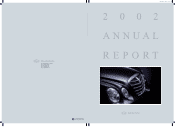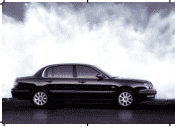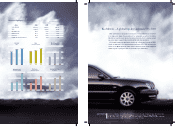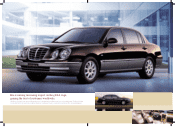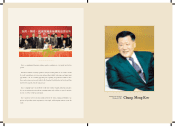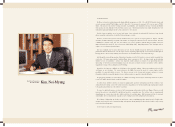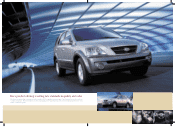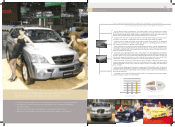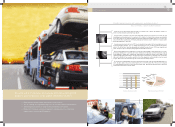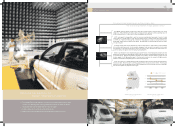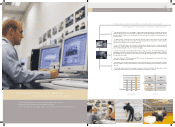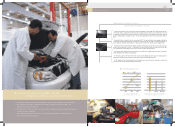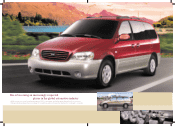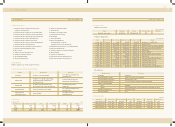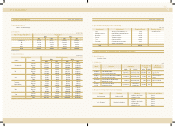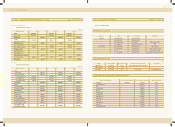Kia 2002 Annual Report Download - page 10
Download and view the complete annual report
Please find page 10 of the 2002 Kia annual report below. You can navigate through the pages in the report by either clicking on the pages listed below, or by using the keyword search tool below to find specific information within the annual report.
2002 saw Kia make quantitative and
qualitative improvements in production.
��� The Kwangju Plant is being upgraded to produce fewer models in larger quantities w hile
facilities at the Hw asung Plant are being expanded beyond just automobile production.
��� Structural alterations at the Sohari Plant have improved logistics.
��� A daily ordering system speeds up customized production.
��� Quality is improved by integrating Kia and Hyundai quality assurance functions.
Production & Qualit y
2002 KIA MO TO RS AN N UAL REPORT
1617
Sweeping system improvements and innovations allow
Kia to increase production of high quality vehicles
2000 2001 2002
400
300
200
100
IQS(Initial Quality Study) Index
Source : J. D. POWER
Kia Industry Average
295
262 231
133
150
157
Annual Production Capacity (units)
As of Dec. 31, 2002
Sohari
340,000
Hwasung
600,000
Kwangju
210,000
Kia’s aggregate production topped ten million units in 2002, and the annual production record w as broken for the second
straight year. These achievements w ere made possible by securing production quality and successfully launching many new
models, including the Sorento, the New Carens, the New Optima/M agentis, and the New Rio.
In 2002, w ork began at the Kw angju Plant to switch from low volume manufacturing of large number of models to the high
volume production of a smaller number of models. When the expansion project is completed, annual capacity will be increased
to 300,000 units. Facilities at the Hw asung Plant, meanw hile, are being expanded to produce not only automobiles but also
quality testing, engine production and greater w orker support. Structural alterations at the Sohari Plant have also been complet-
ed to improve logistics.
A new daily ordering system has been implemented in production related divisions to enable assembly to begin immediately
after customized orders are received. An online operations management system and an after-sales production control system
w ere developed to monitor production line status in real time. The supply of parts to after-sales service centers w as also com-
puterized to speed up the supply process w hile reducing required staffing levels.
Kia M otors and Hyundai M otor also integrated their quality assurance functions. Kia’s Initial Quality Study (IQS) results, w hich
directly affect overseas sales, w ere drastically improved w hile extra care w as taken to minimize quality problems w ith new mod-
els such as the Sorento. Employees w ere trained in new quality control methods to raise their awareness of quality issues. Kia
has been engaged in the Six Sigma quality program for three years and the results w on the company the Six Sigma Innovation
Aw ard at the Korean National Quality M anagement Conference in November 2002.
In 2003, efforts w ill focus on raising productivity through line adjustments, highly successful new model launchings and mini-
mal production flaws. Plans are in place for preventing quality problems by ensuring smooth labor relations. Proactive quality
assurance for new models and IQS quality innovations w ill be strengthened by focusing on quality issues from the R&D stage.
As a result, Kia’s reputation for quality will continue to grow .

